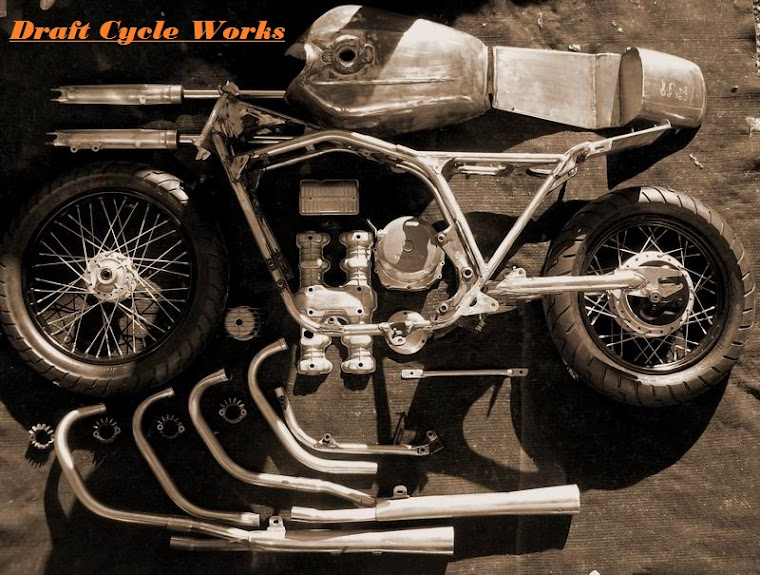This goes for most mechanical carbs. The hardware is just different. First take the top caps off, pry back the locking tab on the lock screw, loosen the lock screw and slide adjustment set screw.
Carbs off the bike.
The lock screw is toward the back and the set screw is the one toward the air filter (both are brass). Ensure that your cap gaskets are in good shape.
Slide adjustment set screw and lock nut fully loosened. Lock tabs are bent back and the lock screw is also loosened.
Next, unscrew the idle knob down to a low setting. A couple millimeters from the threaded steel mount is good. Screw the slide height adjustment down on each carb until the slide is all the way down. I do this by watching the idle adjustment cam and the tops of the other slides to see when they begin to rise. Once they begin to rise, you know the slide you're adjusting is seated. Just turn the set screw back a bit to just before the others rise. Do this for the remaining three carbs.
This is the idle screw (knob) on VM29's unscrewed to a low setting. Note the small gap between the throttle cam and the threaded steel mount. You can close this gap completely for setting the bottom travel of the idle adjustment, I just prefer this way.
Now your slides are pretty close to even but you want to ensure that you have the same slack in each linkage system. To do this, crank the idle knob in to lift the slides up. Snag a drill bit of any size. 1/8" is good. Tighten the slide adjustment nut on the set screw and the lock screw on one carb, say the #4 carb. This will be your reference carb.
Drill bit under the carb slide.
Place the back of the drill bit under the reference carb slide and turn the idle knob until the slide makes contact with it. You want to make sure that the slide isn't resting on it and become familiar with how it feels to slide the bit in and out. You will now set the height of the other slides to match the feel of the reference carb.
Move to one of the other three carbs, say carb #3. Place the drill bit underneath of the slide and lower the slide by adjusting the set screw down. Match the feel from the reference carb and then lock the set screw and lock screw. tightening the lock screw can make a slight change in the slide height so double check the feel on that carb after locking it all down. Repeat this for the final two carbs and you've successfully bench synchronized your rack-o-carbs. If you dont want to, or cant vacuum synchronize the carbs, bend the locking tabs back over the lock screw and replace the top caps. You're done.
Locked and ready to roll.... to vacuum sync, if you're man enough.
The best method for synchronizing carbs is with vacuum gauges with the engine running. A meticulous bench sync can get you close, but a vacuum sync can get you dead on and compensate for any cylinder variation.
To vacuum sync, place the carbs back on your engine and warm the engine to its operating temperature. Next remove the top caps and pry back the lock tab.
Install your vacuum gauges or gauge and restart the engine. Set the idle a bit higher than normal and check the vacuum on each cylinder.
If they are different, you'll need to adjust them. I like to choose a reference carb that is in the middle of the readings. Set all of the other carbs to the same vacuum reading as the reference carb by adjusting the set screws. Once complete, lock it all down, replace the top caps, and drop the idle back down to normal. You're done... Again.
Check your vacuum every couple of months and adjust as needed. A well balanced set of carbs will provide optimum performance. Do yourself a favor and make it part of your regular maintenance program.







No comments:
Post a Comment